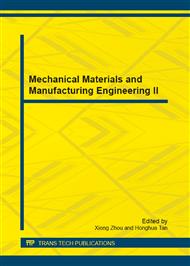p.274
p.280
p.285
p.292
p.298
p.304
p.310
p.316
p.320
Evaluation of Natural Flocculants for Conventional Water Treatment
Abstract:
Drinking water is contaminated from the chemicals and biological impurities around the world mostly in rural area. These contaminations may come from natural sources and leaching of waste deposits which cause a major human health hazard in many parts of the world. There has been very little scientific research work into the use of natural flocculants to purify raw water. Most of the research studies that have been done on conventional water purification in developing countries have focussed on conventional water purification systems using inorganic and poly-electrolyte flocculants. Such systems are very expensive for rural communities in these developing countries as our objective is to provide water that is safe for human consumption by using facilities which can be constructed and operated at a reasonable cost. There is a need to evaluate natural flocculants for conventional water treatment in order to develop inexpensive ways for developing countries to purify their water. In this study, the natural flocculants such as Moringa seeds powder, Guar Gum seeds powder, aluminium sulphate and polyelectrolyte were tested in a jar test apparatus to determine the optimum operating conditions for water or wastewater treatment plants. The results showed that the addition of Moringa Oleifera seeds powder, Guar Gum seeds powder, aluminium sulphate and polyelectrolyte flocculants improved the quality of raw water. The raw water samples from all treatment plants showed a reduction in turbidity that was more than 70% when all the four flocculants applied synergistically.
Info:
Periodical:
Pages:
298-303
Citation:
Online since:
December 2012
Price:
Сopyright:
© 2013 Trans Tech Publications Ltd. All Rights Reserved
Share:
Citation:


